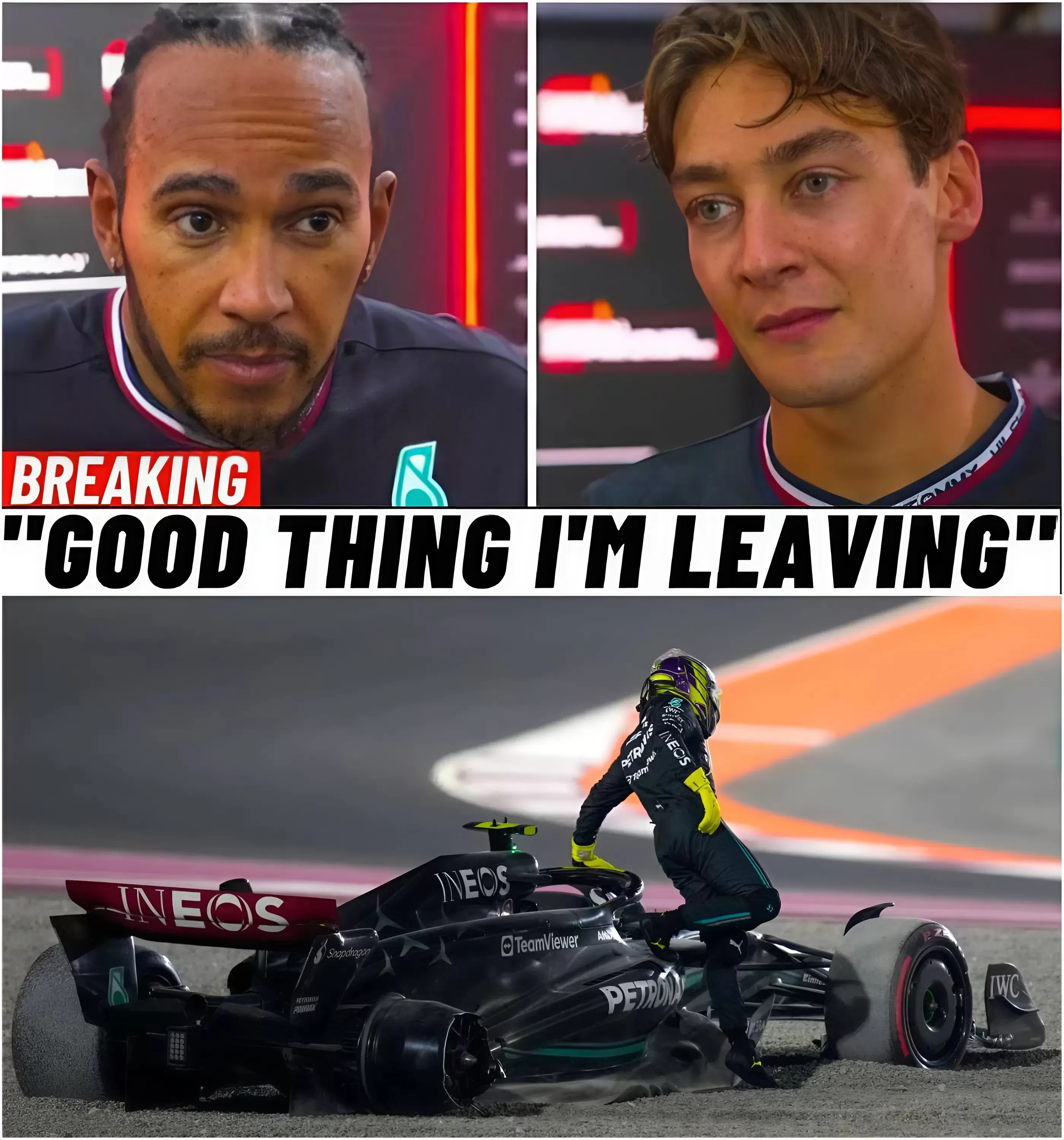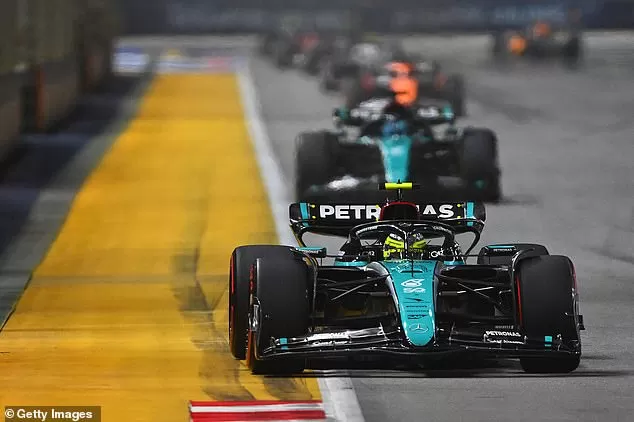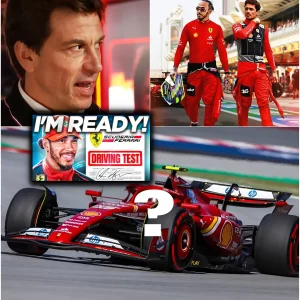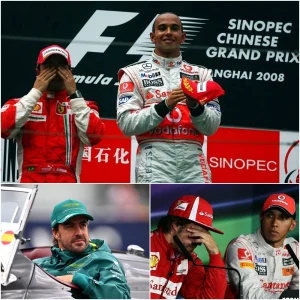Mercedes team principal Toto Wolff publicly apologized after a disastrous performance at the Singapore Grand Prix, saying, “We gave the car to you, and it was just not good enough here.” This rare moment in Formula 1 marked a significant acknowledgment of how far the team had missed the mark during the race weekend. Fans and analysts alike were left stunned as Mercedes, a team that had once dominated the sport, faltered in such dramatic fashion.

The root of Mercedes’ problems lay in both strategy and car performance. From the start, the team’s approach was a gamble, putting Lewis Hamilton on soft tires, hoping to gain an early advantage over Max Verstappen and Lando Norris. The plan was for Hamilton to attack in the opening laps, but things quickly unraveled. Though Hamilton got close to Verstappen in the first corner, the Dutchman defended his position, and Hamilton’s troubles began. The soft tires, known for their rapid wear, started to degrade much faster than expected, leaving Hamilton not in a position to attack but instead to defend. Mercedes, realizing the error, called him into the pits as early as lap 18. Hamilton, visibly frustrated, questioned the decision, saying over the radio, “You’re killing me with this offset, guys.”

This early stop threw Hamilton into traffic, with tires that would need to last far longer than planned, putting him at a severe disadvantage. A team that had once been renowned for its strategic brilliance appeared to have completely misjudged the situation in Singapore.

However, strategy was not the only issue. The W14 car, which had shown flashes of potential earlier in the season, was woefully unsuited for the streets of Singapore. Both Hamilton and George Russell struggled with grip issues, especially in the slower corners, and the car lacked straight-line speed. Despite overnight efforts to adjust the car’s setup, improvements were minimal at best. Hamilton, normally smooth and precise, struggled to find a rhythm, complaining over the radio, “Something’s definitely wrong with the car, guys.”

The Marina Bay Circuit, with its technical demands and tight layout, exposed every weakness in the W14. In sections where the car should have been strongest, particularly the slower corners, it felt sluggish. On the straights, where Mercedes engines typically excel, the car seemed off the pace, as though it was dragging behind.

The drivers’ frustration was palpable. Hamilton, known for his calm demeanor, was visibly agitated throughout the race. He repeatedly questioned the team’s decisions and expressed anger at being put in unfavorable positions. “You put me in a terrible position,” he said, a stark contrast to his usual composed self. Russell, who managed to finish fourth, also struggled with the car’s limitations. While he performed admirably given the circumstances, it was clear that both drivers were pushing the car beyond what it was capable of delivering.

In an unusual move, both Hamilton and Russell opted out of post-race interviews, with Mercedes issuing a statement that the drivers were “recovering from the demands of tonight’s race.” While the team framed it as a physical recovery, it was more likely a reflection of the drivers’ mental and emotional exhaustion after such a disappointing weekend.
As Mercedes struggled, their rivals flourished. Lando Norris and McLaren put on a dominant display, with Norris taking pole position and finishing the race a full 20 seconds ahead of the second-place finisher. The contrast in performance was stark. While Norris and Verstappen seemed to glide effortlessly through the streets of Marina Bay, Hamilton and Russell looked like they were battling every inch of the way.
This performance disparity highlights just how far Mercedes has fallen. A team that once set the standard for excellence in Formula 1 is now struggling just to stay competitive. The Singapore Grand Prix laid bare the gap between Mercedes and their rivals, particularly McLaren and Red Bull. While Norris cruised to victory and Verstappen secured second place, Mercedes was left wondering how things had gone so wrong.
The Singapore disaster also raises serious questions about Mercedes’ future. Currently sitting in fourth place in the Constructors’ Championship, the team that once dominated the sport now faces the prospect of finishing the season in an unfamiliar and uncomfortable position. With Lewis Hamilton’s move to Ferrari in 2025 already announced, the question on everyone’s mind is whether he will be able to secure another victory before his departure.
For Mercedes, the road ahead looks challenging. Significant improvements to the car are needed, not just to salvage this season but to ensure they remain competitive in 2024. The team’s technical staff, led by James Allison, will have to find solutions quickly if they want to avoid another disappointing year.
Beyond the technical and strategic issues, Mercedes also faces a psychological challenge. A weekend like Singapore can have a lasting impact on the entire team’s confidence and morale. The pressure to perform mounts, and when results don’t follow, mistakes become more frequent. This was evident in the tense radio communications between the drivers and the pit wall, as well as the body language of both Hamilton and Russell after the race. To recover, Mercedes will need more than just a faster car and better strategy; they will need to rebuild the mental toughness that once made them an unstoppable force in Formula 1.
In conclusion, Mercedes’ nightmare in Singapore was a combination of poor strategy, underperforming car, and growing frustration among the drivers. With the gap between them and their rivals widening, the team faces a critical juncture. Can Mercedes turn things around and reclaim their place at the top, or has their dominance in Formula 1 truly come to an end? Only time will tell, but for now, the team has a lot of soul-searching to do.





